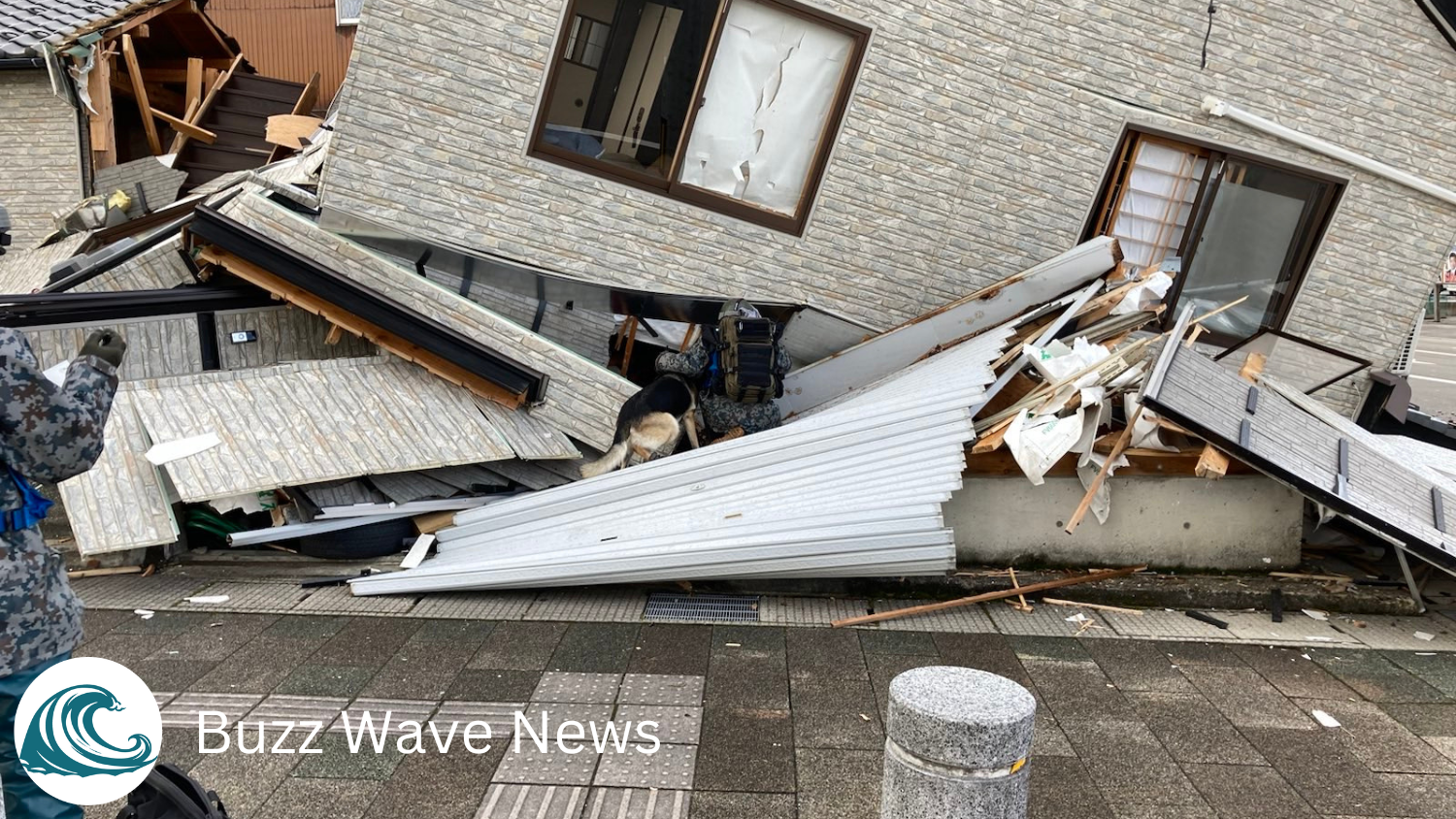In a dramatic and unsettling turn of events, a powerful earthquake with a magnitude of 7.1 struck southern Japan early this morning, triggering widespread concern and a tsunami warning along the affected coastline. This seismic event has sent shockwaves through the region, resulting in significant damage and prompting immediate emergency responses from local authorities and national agencies.
Table of Contents
What is The Earthquake’s Impact?
The earthquake, which occurred at approximately 5:43 AM local time, originated off the coast of Kyushu, one of Japan’s southernmost major islands. The epicenter was recorded at a depth of 10 kilometers beneath the ocean floor, which amplified the quake’s intensity and its impact on coastal communities.
Residents reported that the shaking was severe, with buildings swaying and in some cases collapsing. Infrastructure in several cities, including Fukuoka and Kagoshima, has suffered considerable damage. Emergency services are currently assessing the situation and are working tirelessly to reach those in need.
The Japanese Meteorological Agency (JMA) has confirmed that the quake was felt strongly across a broad area, with reports of tremors reaching as far as Osaka and Tokyo. The intensity of the shaking has led to disruptions in transportation, with train services suspended and major roads blocked by debris.
Read More:- Elon Musk Hits Back at Keir Starmer’s Criticism of His ‘Civil War’ Comment
What are the current tsunami warnings and coastal precautions in effect?
Following the earthquake, the JMA issued a tsunami warning for the coastal regions of Kyushu, as well as for parts of Shikoku. The warning signals a potential tsunami wave height of up to 3 meters (10 feet), heightening the urgency for residents to evacuate low-lying areas and seek higher ground.
Authorities have set up evacuation centers and are coordinating with local governments to ensure that affected populations can move to safety. Coastal communities are being urged to stay away from the shoreline and to follow instructions from emergency services.
In anticipation of the tsunami, coastal businesses and tourist spots have been closed, and maritime traffic has been halted. The Japan Coast Guard has deployed ships to patrol the waters and to assist with any potential maritime emergencies.
How has Japan’s history shaped its earthquake preparedness?
Japan is known for its high seismic activity due to its position on the Pacific Ring of Fire. The country experiences frequent earthquakes, and its residents are well-versed in earthquake preparedness. Building codes are stringent, and many structures are designed to withstand significant seismic activity. Nevertheless, the scale of today’s earthquake has tested these measures, revealing both strengths and vulnerabilities in the system.
The last major earthquake in the region occurred several years ago, and while Japan has made considerable advances in earthquake preparedness and response, the sheer magnitude of today’s event poses significant challenges. Rescue teams and medical personnel are being mobilized, and the Japanese government has requested international assistance to help manage the aftermath.
Humanitarian Response and Recovery Efforts
In the wake of the earthquake and tsunami warning, humanitarian aid is being organized to support those affected. The Japanese Red Cross and various non-governmental organizations (NGOs) are working to provide emergency supplies, medical aid, and temporary shelter. Volunteers have already begun arriving from across the country to assist with relief efforts.
Local businesses and community organizations are also stepping up to support recovery efforts. Many companies are donating resources, including food, water, and medical supplies. Community centers are being converted into temporary shelters, and volunteers are providing essential services to displaced individuals.
What are the next steps in the recovery process?
As the situation continues to develop, the focus will shift from immediate response to long-term recovery. The extent of the damage will become clearer as assessments are completed, and rebuilding efforts will begin once the immediate dangers have been addressed.
In the coming days, it is expected that more detailed reports will emerge regarding the earthquake’s impact and the effectiveness of the response. The Japanese government has pledged to provide updates regularly and to support all efforts to restore normalcy.
For now, the primary concern remains the safety of those affected and the effectiveness of the tsunami warning system. Authorities are working diligently to ensure that all residents are informed and safe, and they are urging everyone to stay tuned to official channels for the latest updates and instructions.
What is the key takeaway from today’s earthquake?
Today’s 7.1 magnitude earthquake has been a stark reminder of the seismic risks that Japan faces. The resilience and preparedness of the Japanese people will be crucial in overcoming the challenges posed by this natural disaster. As emergency response teams continue their work, and as the tsunami threat is monitored, the focus remains on safeguarding lives and minimizing further damage.
The global community watches with concern and solidarity, ready to offer support as Japan navigates through this crisis. The coming days will be critical in determining the full scope of the impact and the effectiveness of the ongoing relief efforts. In the face of such adversity, the strength and determination of the affected communities will play a vital role in the recovery and rebuilding process.
















1 thought on “7.1 Magnitude Earthquake Hits Southern Japan; Tsunami Warning Issued”